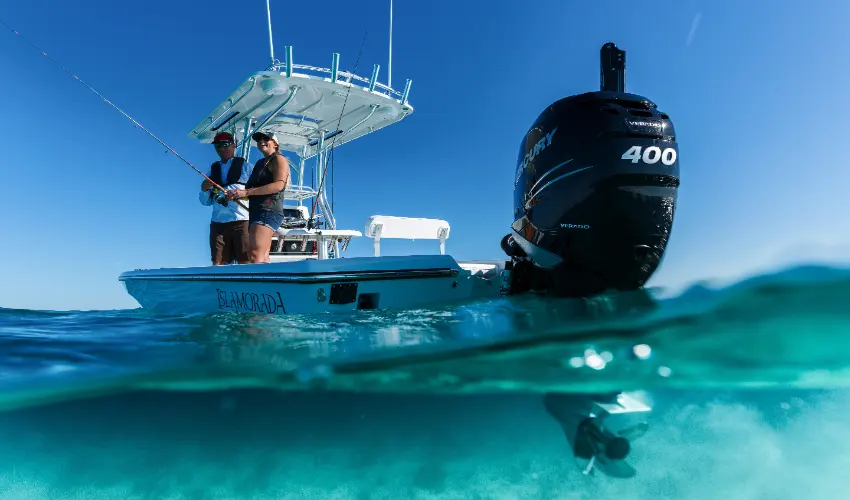Installing an outboard motor on your boat may seem intimidating, but with the right tools and instructions, it’s a task many boat owners can manage themselves. Whether you’re replacing an old motor or outfitting a new boat, this step-by-step guide will walk you through how to install an outboard motor safely and effectively.
Why Proper Installation Matters
Before diving into the process, it’s essential to understand why proper installation is critical. An incorrectly installed outboard motor can lead to poor performance, increased fuel consumption, steering issues, or even accidents. Installing your outboard motor correctly ensures optimal performance, safety, and longevity.
Tools and Equipment You’ll Need
Before starting the installation, gather the necessary tools:
- Adjustable wrench set
- Socket set
- Torque wrench
- Marine-grade sealant
- Screwdrivers
- Drill and drill bits
- Hoist or engine crane (for heavier motors)
- Level
Also, make sure you have the owner’s manual for your specific motor model and the mounting hardware recommended by the manufacturer.
Step 1: Prepare the Transom
The transom is the flat surface at the stern (rear) of your boat where the outboard motor will be mounted. It must be clean, dry, and in excellent condition.
- Inspect the transom for cracks, rot, or damage.
- Clean the surface using a marine cleaner to remove any grease or debris.
- Measure the transom height to ensure compatibility with the motor shaft length (short, long, or extra-long).
Proper alignment begins with a stable, clean, and level transom.
Step 2: Position the Motor
Outboard motors are heavy, so enlist help or use a lifting device like a hoist.
- Center the motor on the transom. Most motors come with a center mark that should align with the boat’s keel (centerline).
- Adjust the height so that the anti-ventilation plate on the motor sits level with or just below the bottom of the hull. This helps with planing and prevents cavitation.
- Use a level to ensure the motor is upright and aligned correctly.
Correct positioning is key to efficient propulsion and handling.
Step 3: Mark and Drill Mounting Holes
Once you’re confident in the motor’s placement, it’s time to secure it.
- Mark the bolt holes using the motor bracket as a template.
- Drill pilot holes where you made the marks, being careful not to damage the transom.
- Apply marine-grade sealant to each hole to prevent water intrusion and rot.
- Drill the final holes to the correct diameter as per your motor’s instructions.
Always double-check measurements before drilling to avoid costly mistakes.
Step 4: Mount and Bolt the Motor
Now you’re ready to attach the motor securely.
- Lift the motor back into position.
- Insert the mounting bolts through the motor bracket and transom.
- Apply sealant to the bolts before inserting them.
- Tighten the nuts and washers using a torque wrench, following the manufacturer’s recommended torque settings.
Make sure all bolts are evenly tightened to ensure a snug, level fit.
Step 5: Connect Fuel, Controls, and Electrical
Now that the motor is mounted, it’s time to connect it to the boat’s systems.
Fuel Line
- Connect the fuel line from the tank to the motor’s fuel connector.
- Prime the line using the bulb primer to remove air.
Throttle and Shift Cables
- Attach the control cables to the motor and throttle controls inside the boat.
- Adjust for proper tension and check for smooth operation.
- Test shifting between neutral, forward, and reverse.
Electrical Wiring
- Connect the battery cables – red to positive, black to negative.
- Secure all connections and use marine-grade terminals.
- Test the ignition to make sure the motor cranks properly.
Steering
If your boat uses a mechanical steering system:
- Insert the steering cable into the motor’s tilt tube.
- Tighten all fittings and check for smooth turning.
Hydraulic systems may require different procedures based on the manufacturer’s specifications.
Step 6: Final Checks and Testing
Before heading out on the water, perform these checks:
- Double-check all bolts and connections
- Inspect for fuel or oil leaks
- Test tilt/trim operation
- Start the motor and let it run briefly on a hose or in a test tank
- Ensure it shifts smoothly between gears
- Check the cooling system is expelling water properly
Safety Tips
- Always follow the manufacturer’s installation guidelines
- Use safety gear, especially when handling heavy motors
- Don’t skip using marine sealant to prevent water damage
- If in doubt, consult a marine mechanic
Conclusion
Installing an outboard motor doesn’t require professional experience if you take your time and follow proper procedures. With careful preparation, the right tools, and a focus on safety, you can successfully install your outboard motor and enjoy smooth, powerful performance on the water.
Whether you’re a seasoned boater or a DIY enthusiast, this guide equips you with the knowledge to handle your own outboard motor installation confidently.
